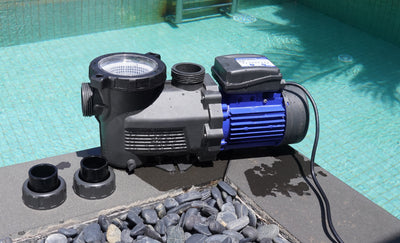How to Start Up a Salt Water Pool in 8 Simple Steps
Starting up a salt water pool can seem intimidating, but with the right approach, you can get your pool ready for a fun and refreshing season. AQUASTRONG is here to guide you through the process with clear, step-by-step instructions on how to start up your salt water pool and maintain its health throughout the year. Let’s dive in!
1. Test and Balance Your Pool Water
Before you turn on your salt water system, it’s important to test and balance your pool water. A balanced pool ensures that your salt water generator works effectively to maintain clean, clear water. Test your water for:
- Total Alkalinity
- pH
- Chlorine
- Cyanuric Acid (Chlorine Stabilizer)
- Calcium Hardness
- Salt Levels
Use AQUASTRONG test strips or a salinity meter to measure salt levels. If you're dealing with metals like copper or iron, you'll need a specialized kit or bring your water sample to a local pool store for analysis.
2. Adjust Total Alkalinity
Total alkalinity helps stabilize your pH levels. If your alkalinity is off, your pH will fluctuate, making it harder for your pool to stay balanced. Aim for a range between 80 to 120 PPM. Use an alkalinity increaser (like baking soda) to raise it, or pH decreaser (muriatic acid) to lower it. Adjusting your alkalinity first ensures a smoother pH balance.
3. Adjust pH Levels
Once your alkalinity is in check, it's time to focus on your pool’s pH. Salt water pools tend to have a higher pH, so you’ll likely need to lower it. The ideal pH range is 7.4 to 7.6. Use pH increaser to raise the pH or pH decreaser (muriatic acid) to lower it. A stable pH helps chlorine and other chemicals work efficiently.
4. Balance Your Chlorine Levels
Your salt water generator will produce chlorine, but it’s important to get your chlorine levels right before starting the system. Chlorine levels should be between 1 and 3 PPM, with 3 PPM being ideal for effective sanitation. If needed, add liquid chlorine or dichlor shock to raise your chlorine levels. Avoid using cal-hypo shock, as it can cause calcium buildup in your salt cell.
5. Add Chlorine Stabilizer (Cyanuric Acid)
Cyanuric Acid, also known as chlorine stabilizer (CYA), helps prevent chlorine from breaking down too quickly under the sun’s UV rays. This is especially important in salt water pools. Keep your CYA levels between 30 and 50 PPM. Some pool owners prefer to keep levels slightly higher (up to 60-80 PPM) to prevent excessive chlorine loss during hot, sunny months. Slowly add stabilizer to your pool to avoid overshooting the ideal levels. If CYA levels get too high, you’ll need to drain and refill some pool water.
6. Adjust Calcium Hardness Levels
Calcium hardness affects your pool surfaces and equipment, so it’s important to keep it within the right range. For vinyl liner or fiberglass pools, calcium levels should be between 175 and 225 PPM. For concrete or plaster pools, aim for 200 to 275 PPM. Add calcium hardness increaser to raise the levels if necessary. If your calcium levels are too high, you may need to partially drain the pool and refill it with fresh water to prevent calcium buildup.
7. Add Pool-Grade Salt
Now that your other levels are balanced, it’s time to add salt. Salt is the key ingredient for your salt water generator to create chlorine. Check your salt water chlorinator’s manufacturer recommendations for the appropriate salinity levels (typically between 2700-3500 PPM). For a 10,000-gallon pool, you’ll likely need six to seven 40-pound bags of pool-grade salt.
Make sure to use pool-grade salt specifically designed for salt water pools. Avoid using rock salt or table salt, as they contain impurities that can damage your system. After adding the salt, circulate it with your pump and filter for several hours or overnight to allow the salt to dissolve and fully integrate into the water.
8. Turn On Your Salt Water System
Once the water levels are properly balanced and salt has dissolved, it’s time to turn on your salt water generator. If there’s enough salt in the pool, your generator will begin converting the salt into chlorine automatically. Your system will maintain the proper chlorine levels to keep your pool clean throughout the season.
Ongoing Salt Water Pool Maintenance
With your salt water pool up and running, it’s essential to keep up with regular maintenance. Here’s a quick checklist:
- Clean your salt water cell every few months to prevent mineral buildup.
- Check salt levels regularly to ensure your salt water generator can operate effectively.
- Monitor chlorine and pH levels to keep your pool balanced and safe for swimming.
- Inspect the pool pump and filter to ensure smooth operation and clear water.
By following these steps and maintaining a balanced pool, you can enjoy a crystal-clear pool all season long. If you need additional support or products for your salt water pool, AQUASTRONG offers a full line of pool maintenance solutions to help keep your pool in top shape.

